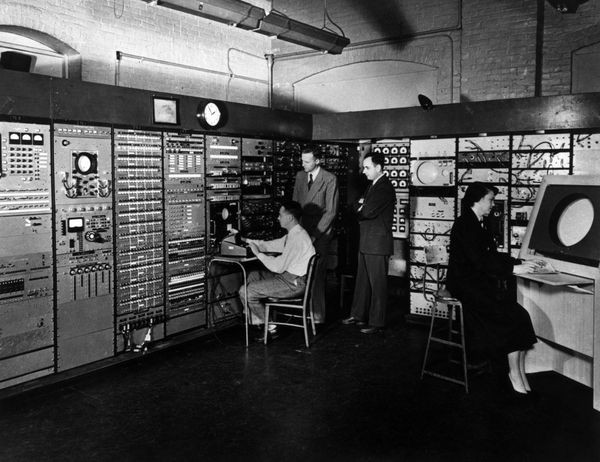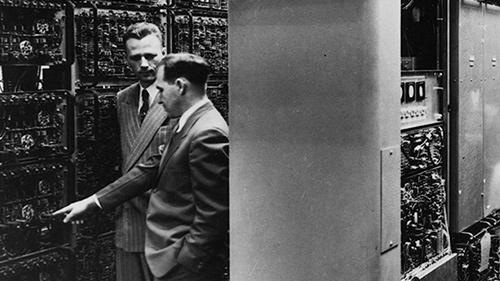Whirlwind: Preparing the Way for SAGE
Whirlwind I computer
Whirlwind was big, occupying 2,500 sq.ft. of MIT’s Barta Building. Its video display, real-time interaction and especially its core memory represented significant advances that carried over into the SAGE design.
Project Whirlwind
Project Whirlwind laid much of the technological and organizational foundation for what later became the SAGE (Semi-Automatic Ground Environment) system.
Initiated by the Navy during World War II and developed at MIT, Whirlwind was intended for pilot training, using computers to simulate any type of aircraft and connect it to a cockpit mock-up. Project leader Jay Forrester shifted Whirlwind from an analog to a digital system.
Among Whirlwind’s key innovations was its faster magnetic core memory introduced in 1953, which became the principal type of memory until the 1970s.
Whirlwind rack
Whirlwind’s success inspired the transistorized TX-0 and TX-2 computers. The TX-2 laid the foundation for later designs at Digital Equipment Corporation, founded in 1957 by Ken Olsen and Harlan Anderson after leaving MIT’s Lincoln Laboratories.
View Artifact DetailWhirlwind
Whirlwind was big, occupying 2,500 sq.ft. of MIT’s Barta Building. Its video display, real-time interaction and especially its core memory represented significant advances that carried over into the SAGE design.
View Artifact Detail




